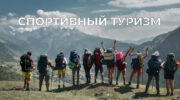In the article “Luge” we will tell you about downhill sledding on an artificial track. You will learn a brief history, rules, and equipment.
#LugeSports #Luge #Sunki #FIL #Sports #WinterSport
Luge has been around since the early 16th century in central Europe, but it would take about 300 years for it to get its chance to develop. The driver of its popularization was the usual flow of tourists.
In 19th-century Switzerland, hotel owners began building ice trails to attract clients who were looking for thrills and adventure. One such owner was Caspar Badrutt, owner of the hotel in St. Moritz. His desire to earn money from tourists allowed him to create two sports: skeleton and tobogganing.

Speed sledding eventually became so popular that in 1883 it was decided to hold the first competitions. A four-kilometer-long ice track was built especially for the competition, which stretched from Davos to the nearby village of Klosters.
Thirty years after the sports forum, in 1913, an international federation was founded in Saxony, which was subsequently reorganized twice (in 1935 and 1957). In 1914, in the small Austrian village of Reichenfels, the 1st European Championship was held with single and double crews.
The first World Championship was held on the Norwegian Korketrekren in 1955, and in 1964 luge was officially included in the program of the Olympic Games. At the 9th Winter Games in Austria competitions were held in 3 disciplines: individual races among men, women and team competitions.

The absolute leader in this sport is the German team. German athletes almost always win gold medals and are the “trendsetter. As for Russia, we won our only Olympic gold medal in 1980 at the Games in the USA.
Then Vera Vasilyevna Zozulya won the individual race, becoming the only woman in the history of luge who won the Olympic gold without speaking German. Zozulya was also world champion in ’78 and European champion in ’76.
There are currently four disciplines at the Olympics: men’s singles, women’s singles, doubles, and team relay. The men’s course is 0.84 miles long and the women’s 0.75 miles (approximately 1.3 km).

Pair race is two athletes competing together on the same sled. The doubles discipline is open to both sexes, i.e. the pair can consist of either two women or two men or be a mixed version, but in most cases there are two men each.
The team relay consists of 3 heats, two individual races (male and female) and a pair race. The women’s relay starts with the male relay, then the male relay goes to the track, and the pair completes the competition.
Each run in the relay ends with touching the touch pad (pear) to allow the next competitor to start. If someone accidentally misses an impromptu relay pass, the team is disqualified.

The most obvious and most important element in luge is the sled itself. In singles, they must weigh between 21 and 25 kg, and in doubles, between 25 and 30 kg. As for the weight of the athlete, there is no limit in this sport, but additional weights as ballast can be used.
What does it mean? There is an optimal weight of the rider, which allows to distribute the weight evenly on the sled, i.e. to catch the ideal balance. For women, this weight is 75 kg, for men 90 kg. If an athlete weighs less, he/she can add the difference to the sled in the form of ballast.
The sled is made to individual dimensions. The main material is fiberglass and metal. The skid itself consists of a metal blade, which is mounted on a wooden frame with a composite spacer.
To be able to participate in competitions, each athlete must have a license and be wearing specialized equipment. This includes booties (spiked shoes), a helmet with a protective mask and chin strap, racing gloves with spiked fingers, and an aerodynamic racing suit.

Before each race, the competitor is weighed together with the sled and the skid temperature is checked. If the temperature of the skids is four degrees higher than the control sled, the rider will be disqualified.
Heated runners allow sleds to move faster on the ice track, and this is a violation of the rules. Therefore, athletes place their sleds in front of the tent so that they “cool down” to the control temperature.
For safety reasons, only one sledder may be on the ice track. Before performing their attempt, each rider must wait for the “track clear” signal. After receiving the signal within 30 seconds (45 seconds for double sleds) it is necessary to start acceleration (jerk by hands from starting handles).
The sled is controlled on the track by shifting the center of gravity. If an athlete wants to correct the trajectory of movement, he shifts his body a little to one or the other side. For example, at 140-160 km/h, for a small turn, it will be enough to turn your head in the right direction.

In order to win the competition, the luger must make several successful attempts. The time of each attempt is added up to the total result. The rider with the lowest total score wins. At the Olympic Games in singles each athlete makes 4 attempts and pairs make 2 attempts.
The Olympic events for singles are divided into 2 days while pairs compete on the same day. In the World Cup, however, the individual races are fewer, with only two attempts per individual. The lists of participants of the Olympic Games are formed on the basis of the World Cup ranking for 7 years.
Luge is an extremely difficult and extreme sport that requires a lot of strength and endurance. Strength is needed for the start acceleration, endurance is needed during the race, because the athlete experiences 4-5G of overload, and concentration will not allow you to relax for a fraction of a second.
To become a real racer, you need to enroll in a specialized section. In her accepts 10 years, before the requirements of SanPiNa not allowed. But if you have a great desire and aspiration, then the child can be given to the section of winter sports at the age of 3-4 years, and after some time to choose a narrow specialization. Good luck to you!
About Luge
FAQs
What is luge?
Luge is the downhill sledding on winding icy tracks. There are two types of speed sleds: single and double sleds. The competition involves singles, pairs and mixed pairs (man + woman).
Who is the most titled luge rider?
Among men, the most titled is a couple from Germany Tobias Wendl/Tobias Arlt. The pair won 6 Olympic gold medals. Among women, the leader is the German luge rider Natalie Geisenberger, she has 7 Olympic awards to her credit, where 6 of them are gold. In Russia, Vera Zozulya showed the most significant achievement in 1980 in Lake Placid, she won Olympic gold in singles.
What is the maximum speed in luge?
On average, luge riders reach a speed of 140 km/h. The speed record of 154 km / h belongs to the Austrian Manuel Pfister on the highway in Whistler (Canada).









